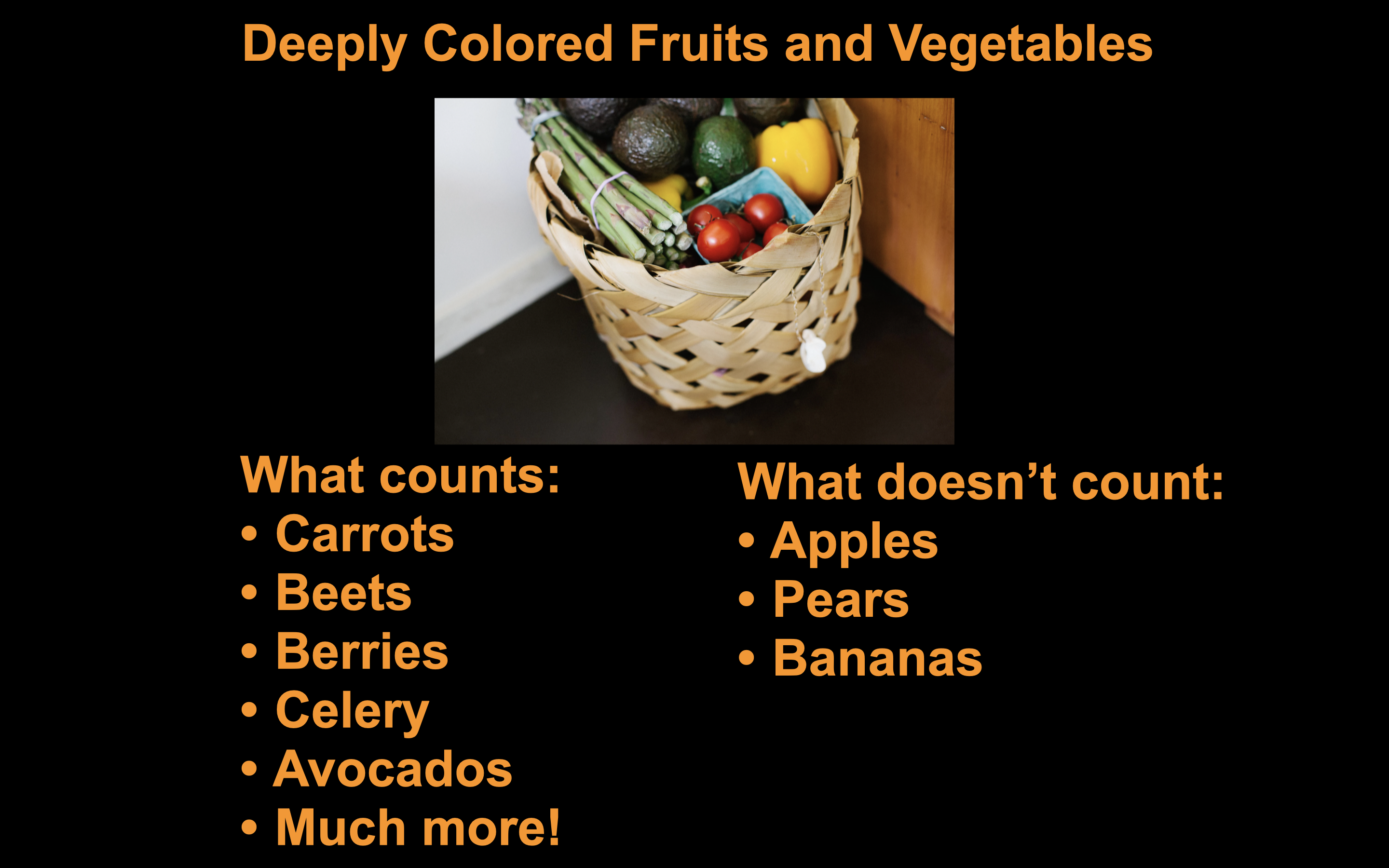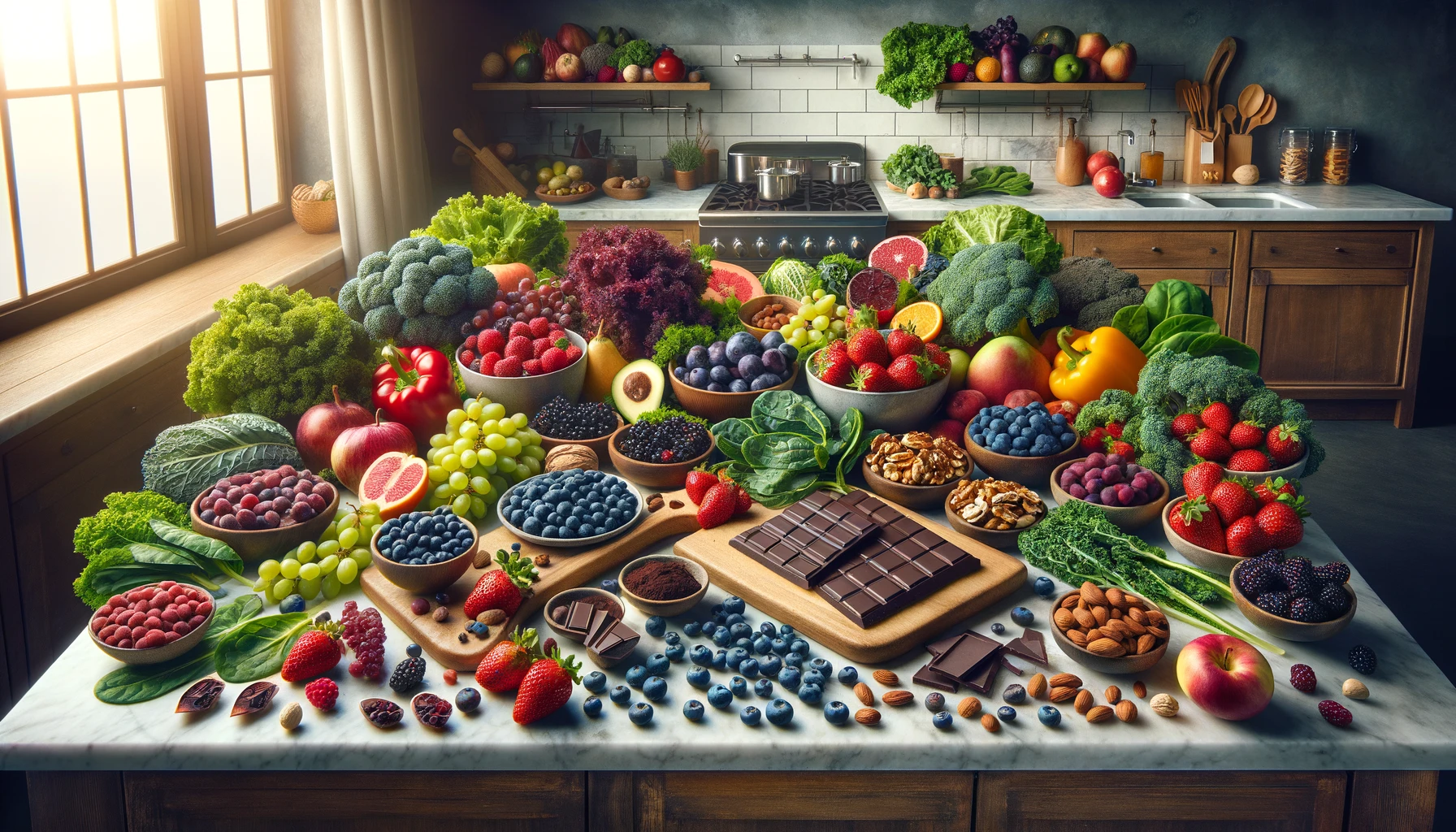Deeply Colored Produce: Unleash the Power of Pigment!
The Phytonutrient Symphony of Deeply Colored Produce
In this post, we will explore the importance of adding deeply colored produce into your diet, understanding how their vibrant colors show us their rich antioxidant content, and uncover the vital role they play in aiding your brain health. These deeply colored foods are absolute heavy hitters when it comes to nutrients that help your brain!
As we delve further into our journey of feeding your brain, it becomes more evident that phytonutrients are key players in boosting cognitive function and overall brain health. These phytonutrients found in plants offer a remarkable range of benefits, from reducing inflammation to protecting against oxidative stress.
Why Lump Fruits and Vegetables Together?
When it comes to phytonutrients, it’s essential to appreciate the wealth of benefits offered by both fruits and vegetables. Fruits and veggies that are colored throughout, like carrots, beets, berries, kiwis, celery, etc. are packed with antioxidant power which is very important for our brain health, as well as many other health markers.
Rather than looking at fruits and vegetables separately, we are going to lump them together and separate them by color.
While many of us are aware that avocados, tomatoes, and olives are technically fruits, fewer people realize that cucumbers, peppers, zucchinis, pumpkins, and summer squash also fall into the fruit category. In the context of brain health, the focus is on the deeply pigmented varieties, regardless of their fruit or vegetable classification.

How to Select the Best Produce:
Did you know that zucchinis are technically fruits? The reason it makes sense to separate these plants by color is because the antioxidants and phytonutrients that supply our nervous system are not associated with whether the plant is a fruit or vegetable. Rather, it is the color of that produce.
When we talk about pigment, white is not considered to be a color. Also, we are talking about produce that are colored all the way through, and not just on the skin.
When the deep pigment in a vegetable or fruit is colored all the way through, the amount of antioxidants is the highest.
Fruits such as apples, bananas, and pears do not exhibit deep pigmentation on the inside, which means they do not possess the same amount of antioxidants found in the deeply colored produce that are colored throughout. Therefore, it is important not to substitute these fruits for the wide array of other nutrient-rich foods that we should include in our daily meals.
Importance of Antioxidants: Guardians of Brain Health
Antioxidants are compounds that help protect our cells, including brain cells, from oxidative damage caused by harmful free radicals. These unstable molecules can wreak havoc in the body, adding to inflammation, cellular dysfunction, and neurodegenerative diseases.
Deeply colored produce shines brightly in terms of antioxidant richness, making them valuable allies in aiding brain health.

The Colorful Correlation: Antioxidants and Phytonutrients
The vivid hues found in produce are not just nice to look at. They are showing us the diverse array of antioxidants contained within. Different colors represent specific types of phytonutrients, each with its unique set of benefits for brain health.
Red and Purple: Anthocyanins
Produce with deep shades of red and purple owe their vibrant colors to a group of antioxidants called anthocyanins. Produce like berries, cherries, grapes, beets, and eggplants all contain anthocyanins. These powerful compounds have been associated with improved memory, cognitive function, and reduced risk of neurodegenerative diseases like Alzheimer’s and Parkinson’s.
Orange and Yellow: Carotenoids
Carotenoids, including beta-carotene and lutein, are responsible for the radiant orange and yellow hues. For example, these pigments are found in produce like carrots, sweet potatoes, oranges, mangoes, and bell peppers. These antioxidants offer protection against age-related cognitive decline, promote healthy vision, and support overall brain function.
Green: Chlorophyll and Lutein
The deep greens found in leafy greens, as well as broccoli and other veggies owe their color to chlorophyll. While lutein is actually yellow in color, it is found in the highest amounts in deeply green colored foods. Chlorophyll acts as a powerful detoxifier of heavy metals. Similarly, lutein supports eye health and may have cognitive benefits by reducing the risk of cognitive decline.

The Rainbow Connection: A Symphony of Brain Nourishment
By including a variety of deeply colored produce in your diet, you can greatly improve brain function. Each color represents a unique set of phytonutrients working to protect against inflammation, oxidative stress, and cognitive decline. Each color has similar benefits as well as unique benefits specific to that phytonutrient.
Painting Your Plate with Deeply Colored Produce
In this chapter, we have found the importance of deeply colored produce in helping brain health. By lumping all produce together and choosing them by color, we can appreciate the bounty of phytonutrients they offer.
You embrace the vibrant spectrum of nature’s offerings when you fill your plate with a rainbow of deeply colored produce. Also, you are feeding your brain with a symphony of antioxidants and phytonutrients essential for its optimal function.
Learn How to Feed Your Brain!
We’ve created free nutritional guides to help you learn how to feed your brain. They will explain exactly what to eat. Also, they will ex[lain how much of each to take out the guesswork when it comes to feeding your brain. CLICK HERE to download these easy-to-use, color-coded guides that will make feeding your brain easy and delicious.


